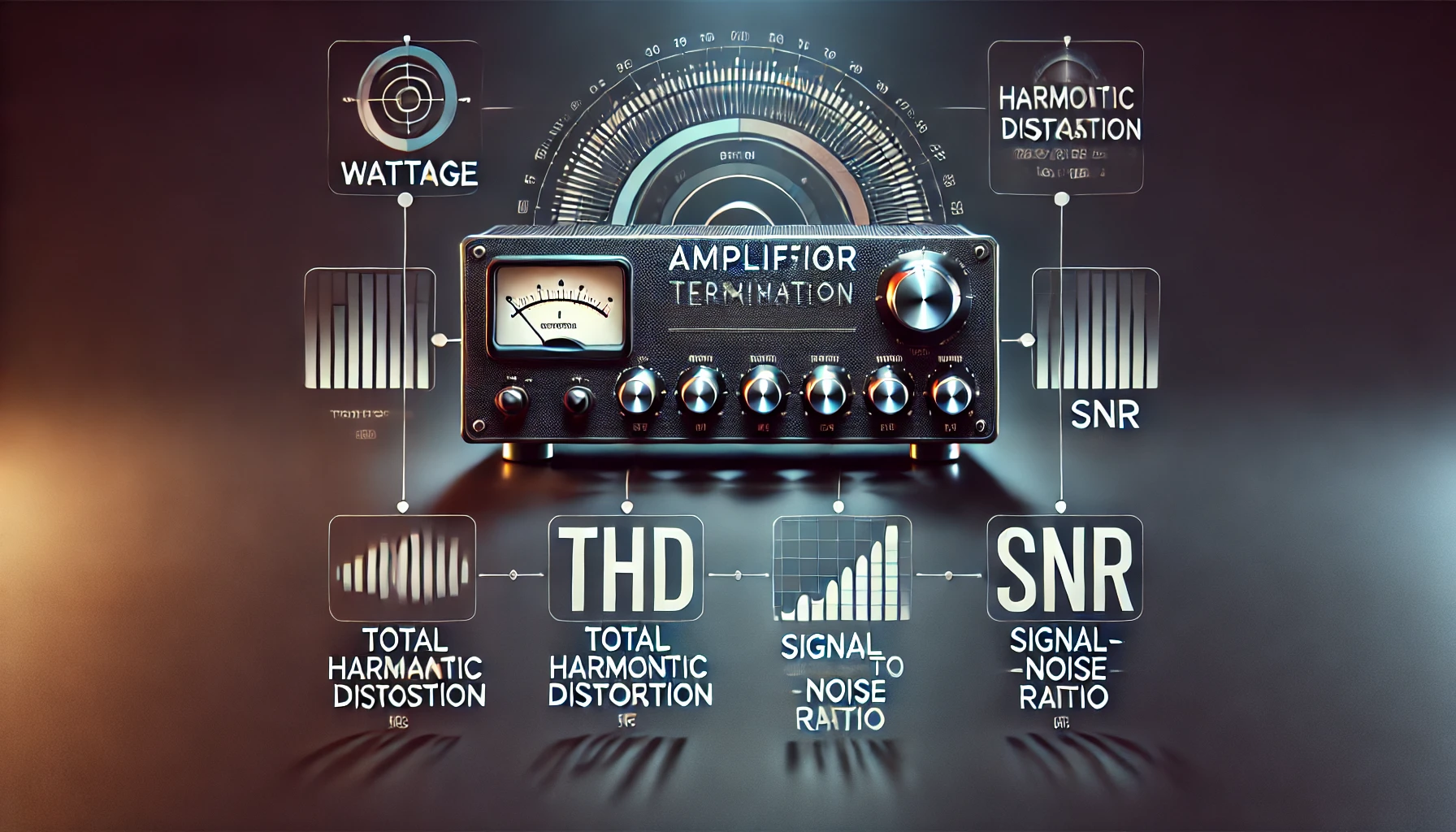Amplifier Terminology
Understanding amplifier terminology can feel like deciphering a new language. Terms like wattage, Total Harmonic Distortion (THD), and signal-to-noise ratio (SNR) might seem daunting at first, but with a bit of insight, they become manageable. In this blog post, we’ll break down these crucial terms, helping you navigate the world of amplifiers with confidence.
What is Wattage?
Wattage is perhaps the most commonly discussed aspect of amplifiers. It refers to the amount of power the amplifier can deliver to your speakers. But there’s more to it than just a number.
Understanding RMS and Peak Power
- RMS Power: Root Mean Square (RMS) power is the continuous power an amplifier can produce. This is the most accurate representation of an amplifier’s capability.
- Peak Power: This is the maximum power an amplifier can deliver in short bursts. While it’s often highlighted in marketing materials, it’s less critical than RMS for real-world performance.
Example: If an amplifier is rated at 100 watts RMS and 200 watts peak, it means it can consistently deliver 100 watts of power but can momentarily spike up to 200 watts during loud passages.
Deciphering Total Harmonic Distortion (THD)
Total Harmonic Distortion (THD) is a measure of how accurately an amplifier reproduces audio signals. Lower THD means less distortion and, therefore, cleaner sound.
How THD Affects Sound Quality
- Low THD (<0.1%): Amplifiers with low THD levels produce a cleaner and more accurate sound.
- High THD (>1%): Amplifiers with higher THD levels can introduce noticeable distortion, affecting the overall sound quality.
Example: An amplifier with a THD of 0.05% will provide a much cleaner sound than one with a THD of 1%.
Signal-to-noise ratio (SNR)
Signal-to-Noise Ratio (SNR) compares the level of the desired signal to the level of background noise. A higher SNR indicates a more precise signal with less background noise.
SNR and Audio Clarity
- High SNR (>90dB): Amplifiers with a high SNR produce more transparent and more detailed audio.
- Low SNR (<70dB): Amplifiers with a low SNR may introduce background noise, which can be distracting during quiet passages.
Example: An amplifier with an SNR of 100dB will offer a much more transparent sound compared to one with an SNR of 60 dB.
The Relationship Between Wattage, THD, and SNR
Understanding the interplay between wattage, THD, and SNR is crucial for selecting the suitable amplifier. High wattage can provide powerful sound, but if the THD is too high, the sound can become distorted. Similarly, if the SNR is low, the background noise can overshadow the audio signal, reducing clarity.
Choosing the Right Amplifier
When choosing an amplifier, consider the following:
- Usage: Determine if you need an amplifier for home audio, a professional setup, or portable use.
- Power Needs: Assess the power requirements of your speakers. Ensure the amplifier’s RMS wattage matches or exceeds these needs.
- Sound Quality: Look for amplifiers with low THD and high SNR to ensure clean and clear audio.
Conclusion
Navigating amplifier terminology doesn’t have to be overwhelming. By understanding wattage, THD, and SNR, you can make informed decisions and find the perfect amplifier to meet your needs. Remember, it’s not just about high power; it’s about finding the right balance for clean, powerful, and precise audio.

